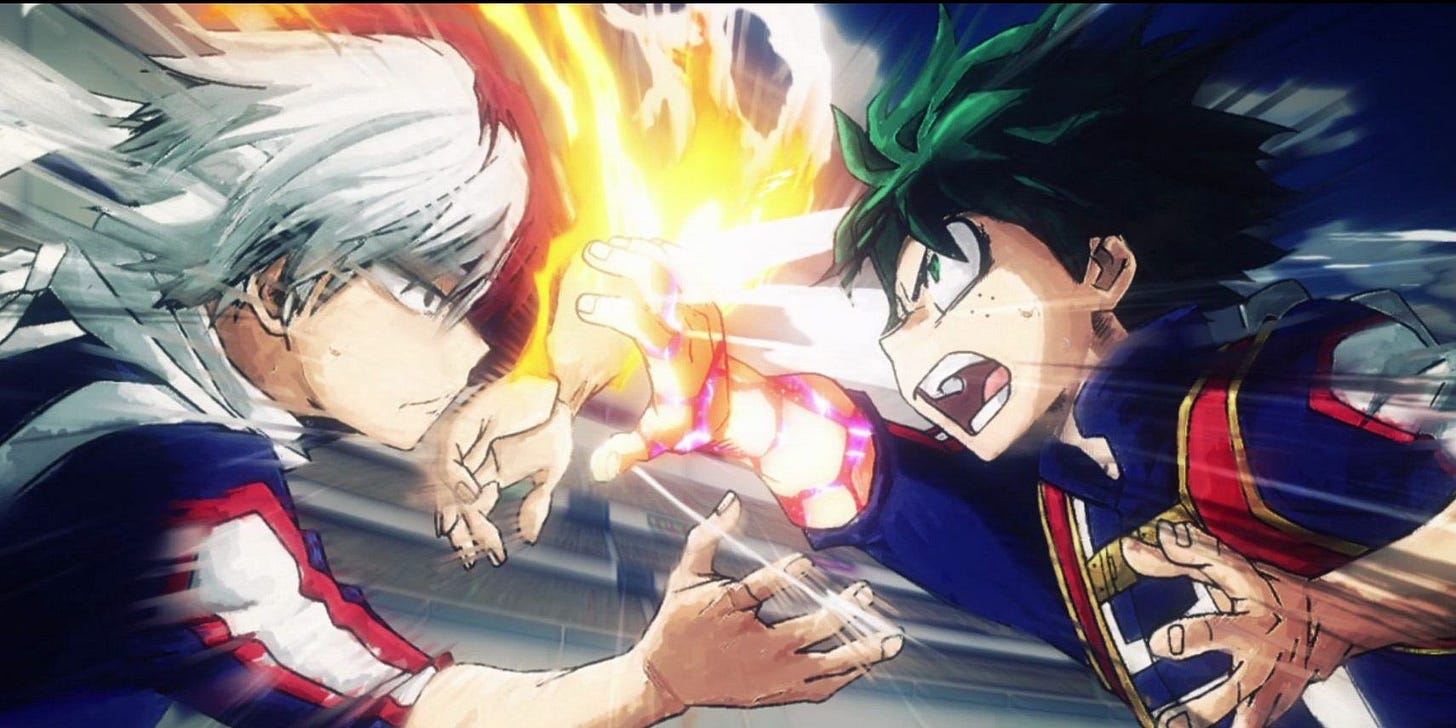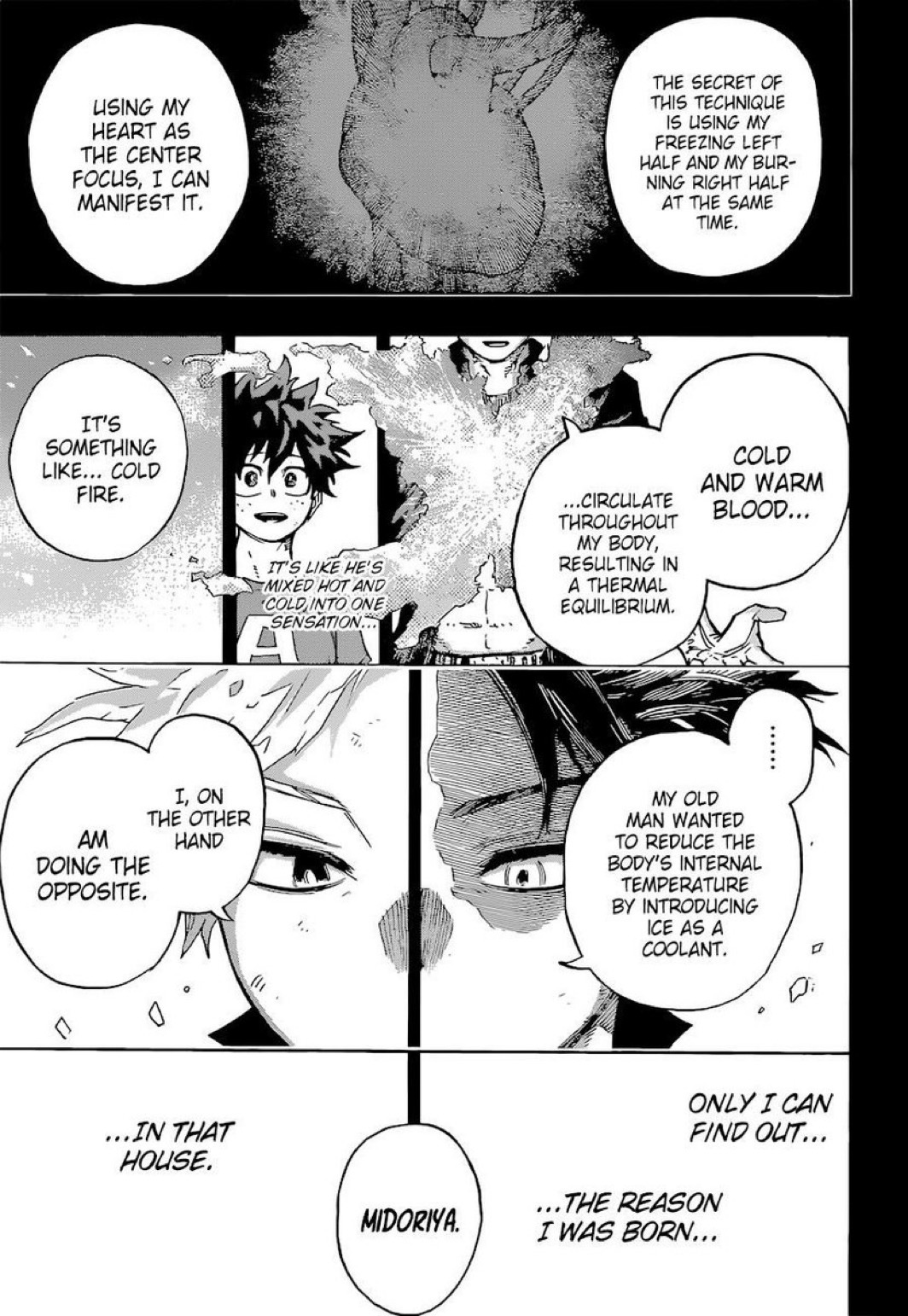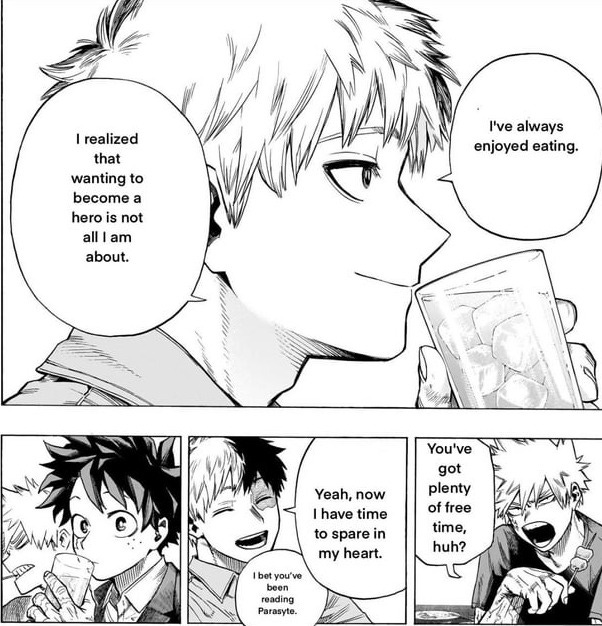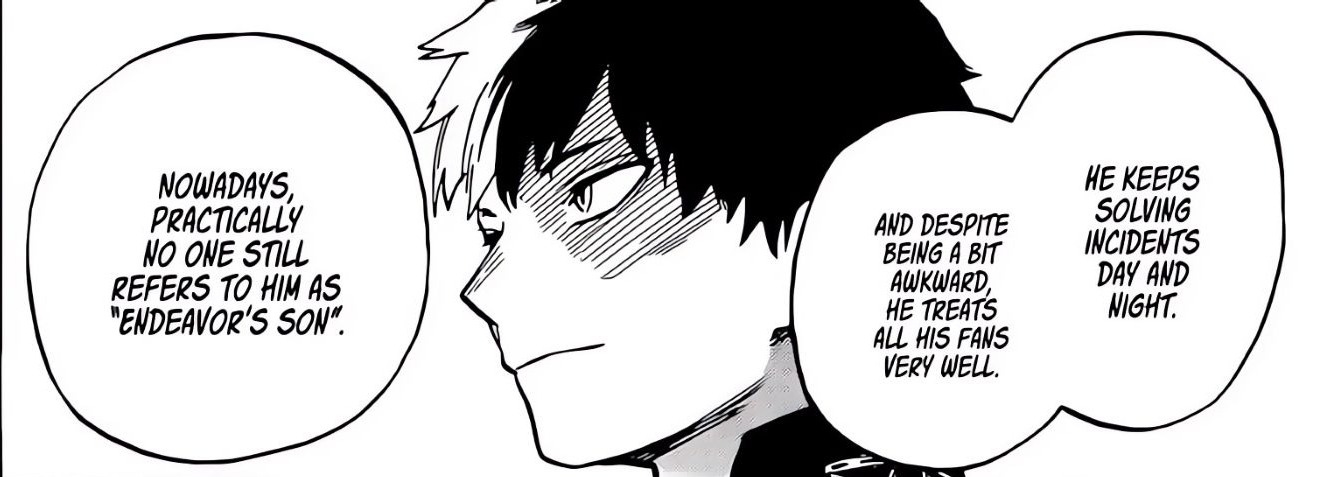Pt. III: Shoto Todoroki and the Somaesthetics of Making Friends and Managing Stress
Everyday Somaesthetics as Embodied Healing: The Balance between Hurt and Harmony is a Matter of the Heart
There is power in finding peace about being yourself. The amount of strength it takes to defy your parents’ dreams and expectations to become the most authentic self who’s proud of the person reflected back to you is superhuman. But you can do it. No matter how long it takes, choose yourself over your parents’ vision of who they want you to be. You know you’re capable of being more.
So, be different. Choose differently.
That’s why creativity is a spiritual act. It requires a version of you that cannot be manufactured by another person’s expectations if it is to be sustained and transformative. Art in its most authentic form is most impactful when it connects students through holistic, diverse, and inclusive education, and practice as a discipline brings learners closer to Greene’s concepts of “wide-awakeness” or “awareness of what it is to be in the world” (p. 35) and creativity. For it to be successful, though, it must happen with empathy and within a community. This is how somaesthetics in Pre-K-12 education can strengthen social skills and relationship-building.
Somaesthetics and the Life-Saving Art of Making Friends
Kindergarten was designed to help children learn the somaesthetics of forming ethical friendships and fostering skills essential for worldmaking, including broad-mindedness, tolerance, and a sense of belonging. A somaesthetic-focused education is particularly effective in achieving these goals.
A primary tenant of somaesthetics in learning is “making friends,”1 a dialogue through interpersonal relationships, and effective communication. Organizing classroom seating arrangements in pairs and groups that allow students to work together and get to know each other, rotating seating throughout the school year so that all students can “make friends,” and peer-monitoring and modeling appropriate classroom behavior and healthy relationships are practical applications educators can employ.
“Class A doesn’t leave anyone behind.”
Shoto is a high school student—a teenager, and developmentally, he’s in a fragile mental and emotional stage for making friends. Shoto’s character development throughout the series hinges upon him meeting one very important person on the first day of his hero academia: Izuku Midoriya— his first friend, his first challenge/challenger, the first person who helped him feel more than his childhood soul wounds and heal—his best friend. They appear vastly different at first, hailing from distinct backgrounds, yet a deeper look into their relationship development reveals they form a perfectly balanced duo.
Shoto was not raised to be grateful; acknowledging the work and effort of others was not what he was taught by his abusive father. But he was reminded that he wasn’t a prisoner of his lineage from his mother and friends. But one person was enough, which is the lesson I want to end with.
All you need is one person who sees you behind the mask you wear to hide from others. All you need is one person rooting for you, that they believe in you. One person telling you that you can do it can do the scary and challenging thing, are stronger than what you’ve been through, and can overcome what you’re going through. Be that one person to someone else. Help them find balance in their chaotic lives. Tell them they can be loved fully. Show them that they are a good person and deserving of good things even when life only deals them with sticks and stones and words that break their bones.
“Midoriya. Thanks for showing me the truth. This is my Quirk.”
Shoto, e148 - Two Flashfires
Through his friendship with Izuku Midoriya, Shoto Todoroki learned there is a path from strife, stress, and trauma to mindfulness, harmony, and belonging. He had to unlearn the dysfunctional programming of his family’s painful dynamics within himself to embrace his Quirk and awaken its ultimate power— being true to himself.
Be a friend. If you are a friend, thank you for being a friend.
A Balancing Act: Stress and Mindfulness
Emotional states often trigger bodily changes, such as variations in heart rate, muscle tension or relaxation, sensations of warmth or coolness, and feelings of expansion or contraction. The nervous system responds quickly to situations like perceived danger or safety, frequently operating independently of higher cognitive processes and executive functions—what we might call the conscious brain2. Thus, paying attention to what happens in the body can frequently reveal your emotional state more swiftly than concentrating solely on the mental aspects of the experience. Since bodily sensations often go unrecognized unless one pays close attention, it is crucial to practice being aware of these sensations.
Our minds and bodies respond quite differently when we feel stressed, and while we can sometimes notice those differences, it isn’t always the case. Additionally, what troubles one person may differ from what troubles another. Cultivate the understanding that stress isn't truly stress until we feel it in our bodies and have a physiological response to it.
Stress originates from our bodily experiences. Factors that create stress—such as people, places, or events—only transform into stressors when the mind interprets them as such, prompting a physical reaction. Stress is the body's reaction to specific demands known as “stressors.” A situation that can cause us to feel stressed is first something outside of our bodies - It can be a person, place, or event. If we respond to this person, place, or event by feeling upset and tense, then we call that a "stress trigger." The situation “triggered” an automatic response in our body called the "fight, flight, or freeze" response. Every person encounters different degrees of safety and danger.
As a result, we can all learn to understand our nervous systems and regulate stress through physical practices and the development of “body literacy.”
Mindfulness of Sensations Reflective Practice: “What Bodily Sensations Do I Feel When I Am Stressed?”
Please check off everything that describes how you have felt during times when you are stressed:
Feeling jumpy
Can’t sit still
Fast breathing
Shaky hands
Cold hands
Shaky legs
Cold feet
Heart pounding and beating fast
Tight feelings in the chest
Getting angry easily
Worried or afraid over little things
Feeling like crying
Dry mouth
Muscles feel tense
Upset stomach
Sweating
Hard time falling asleep
[Source: Building Resilience from the Inside Out – Grades K-8 by L. Lantieri, Exercises to Calm the Body and Focus the Mind for Grades 6-8]
Contemplative-Based Mindful Breathing:
Whenever you feel any of these sensations, stop, breathe deeply—fill your lungs and expand your belly. Continue to focus your awareness on your breathing—slow, deep, full breaths—until the stress-induced sensations calm into nothingness.
The Healing Power of Storytelling
Storytelling, the art and activity of writing, telling, or reading narratives, is a spiritual and creative-contemplative practice. Originating from oral traditions that share history and moral teachings, storytelling is a potent means of healing various traumas (Delgado,1989). Central to storytelling is the significance of delivering messages that resonate with audiences for many reasons. As an avid writer and reader, there is nothing more satisfying than witnessing a character’s personal development done well and with implicit moral intention.
Through the storyteller’s reflective process of arranging events to express a particular perspective, stories can embody values and moral judgments that empower the storyteller and forge connections with their audience, fostering understanding and peace through context and community. Shoto Todoroki has the best character development in the entire My Hero Academia universe because of what he had to overcome to grow into who he became. He had to face his internal and familial demons to find the goodness within himself. Horikoshi-sensei did one thing right to end the entire series. He gives Shoto an ending that he deserves, one where his identity is neither tethered to his father’s dreams nor solely to becoming the number one hero for himself.
What makes Shoto’s development so satisfying is that he grows up to achieve his dream (he becomes Japan’s number two hero), and he continues to discover new ones. He recognizes his strength beyond the battlefield, and his inner strength, that indomitable will he’s always had, begins to shine as it finds its balance with other meaningful aspects of his maturing adult life. He becomes his own man.
Such is the narrative power of storytelling and what Ginwright (2018) calls “Healing-centered engagements.” Therefore, writers can use the Everyday Somaesthetics framework to analyze their characters’ development as they progress through their stories. This demonstrates storytelling's ability to transcend and resonate with multiple cultural contexts. Our stories are relevant to our fight for a just society and world today and in the days to come.
Higuchi, 2010





![MANGA SPOILERS] I love shoto's full development ❤️ : r/BokuNoHeroAcademia MANGA SPOILERS] I love shoto's full development ❤️ : r/BokuNoHeroAcademia](https://substackcdn.com/image/fetch/$s_!dvFo!,w_1456,c_limit,f_auto,q_auto:good,fl_progressive:steep/https%3A%2F%2Fsubstack-post-media.s3.amazonaws.com%2Fpublic%2Fimages%2F4f507553-22c7-4c82-9b4e-1515d80a513b_640x497.jpeg)



